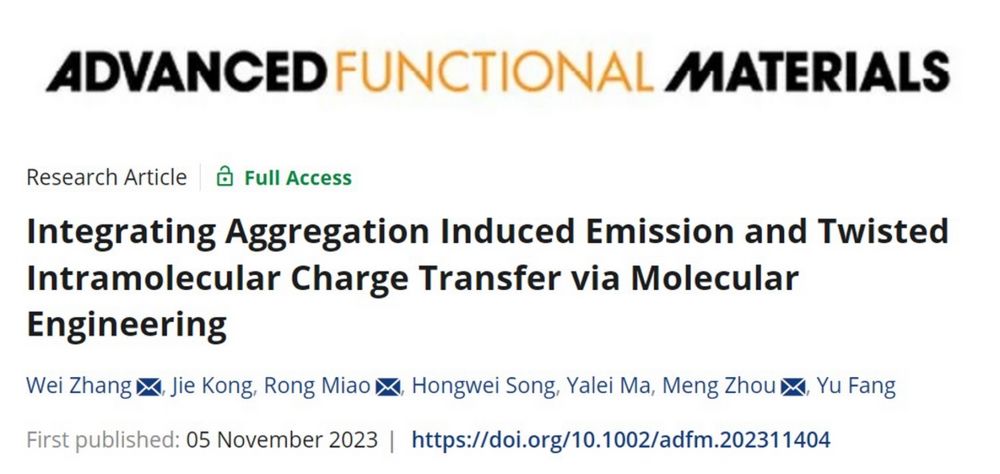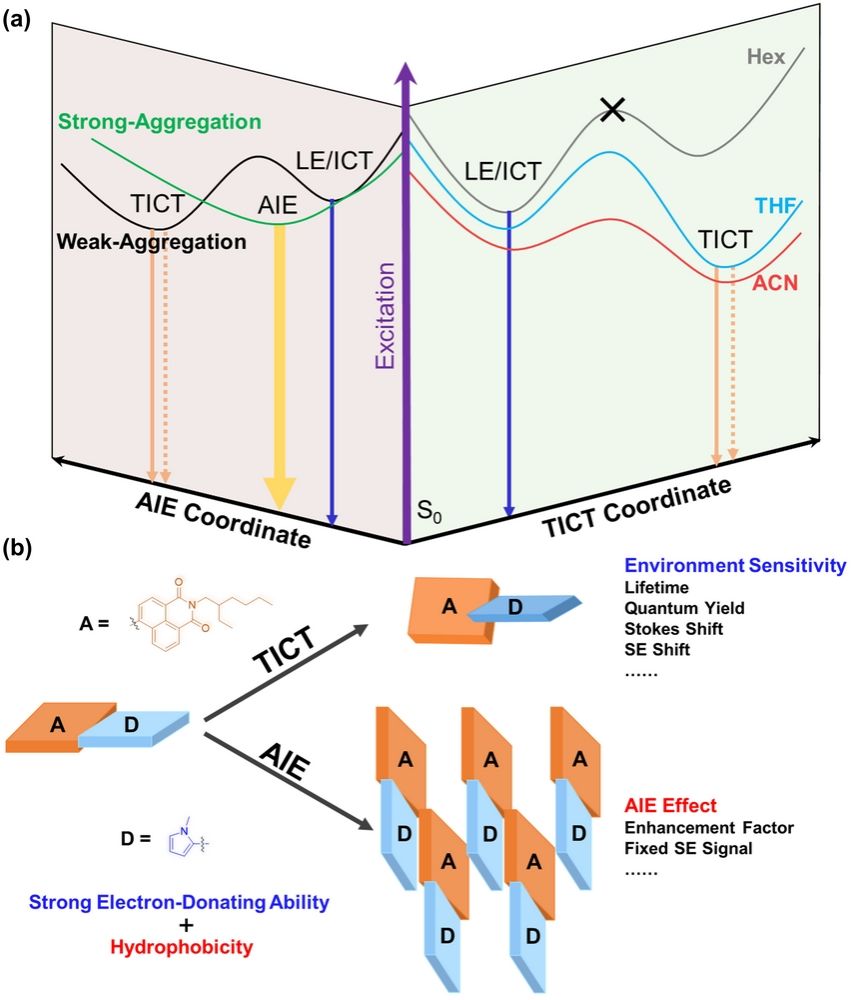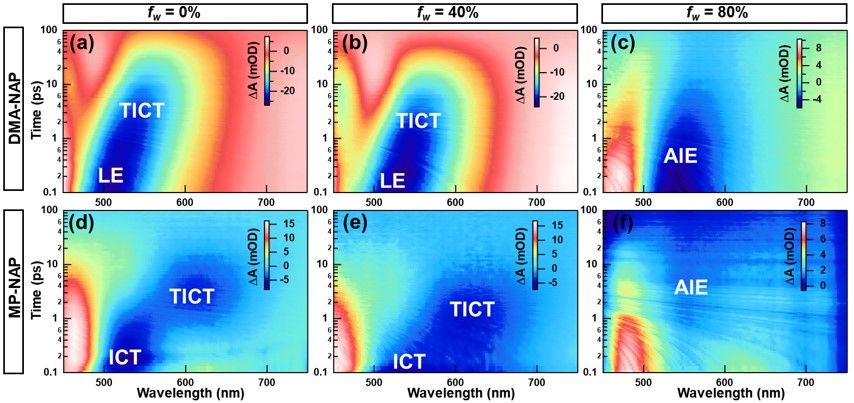
Wei Zhang*, Jie Kong, Rong Miao*, Hongwei Song, Yalei Ma, Meng Zhou*, Yu Fang. Adv. Funct. Mater., 2024, 34, 2311404.
Fluorescence is an excited state-related behavior, and the properties of excited states are usually accompanied by conformational changes, such as twisted intramolecular charge transfer (TICT). In TICT process, fluorophore form an almost vertical TICT state from a quasi-planar local excitation (LE) state or an intramolecular charge transfer (ICT) state by rotating the bonds within the molecule. Because of the strong charge transfer, the fluorescence quantum yield of TICT state is usually low. Nevertheless, fluorescence emission from the TICT state is sensitive to microenvironments such as polarity, viscosity, and temperature, and is therefore used in both qualitative and quantitative sensing applications. Aggregation-induced luminescence (AIE) is a class of molecules in which chromophore exhibits weak fluorescence in a good solvent, but the fluorescence is enhanced in the aggregative state due to the restriction of intramolecular motion and vibration. In both TICT and AIE systems, molecular twisting plays an important role, and the twisting effect is often opposite in the two systems. Therefore, it is a challenge to deeply understand the excited state conformational twisting behavior of fluorescent molecules and obtain molecules with both TICT and AIE.

Figure 1. Schematic illustration of excited-state relaxation pathways of DMA-NAP and MP-NAP in different environments and the proposed molecular design strategy for integrating the TICT and AIE dual properties.

Figure 2. The fs-TA spectra of DMA-NAP and MP-NAP in MeOH/H2O mixtures with different water fraction.
In this work, we report unequivocal evidence for manipulating the TICT and AIE via electron-donor engineering. The conjoint theoretical calculations and spectroscopies rationalized that using a strong electron-donating moiety with hydrophobic effect can integrate the TICT and AIE properties. The solvent polarity-dependent fs-TA measurements of DMA-NAP and MP-NAP reveal the ultrafast formation of TICT state in polar solvents, in contrast to the direct formation of LE state in nonpolar Hex. Molecular rearrangement of DMA-NAP and MP-NAP in the excited states transforms the initially populated quasi-planar structure (LE/weak ICT) into a perpendicular conformation with TICT character. By monitoring the fw-dependent fs-TA spectroscopy, we found that the excited state first decays faster with fw < 40% because adding H2O enhances the mixture polarity but then decays slower (fw = 80%) because of suppressing the intramolecular rotations and vibrations. Therefore, our findings provide an ideal molecular design rational for integrating the TICT and AIE.
First Author: Zhang Wei, Research Fellow, University of Science and Technology of China
Correspondence Authors: Dr. Zhang Wei, Prof. Zhou Meng, University of Science and Technology of China; Assoc. Prof. Miao Rong, Shaanxi Normal University
Full Text Link: https://doi.org/10.1002/adfm.202311404
 Latest Updates
Latest Updates






